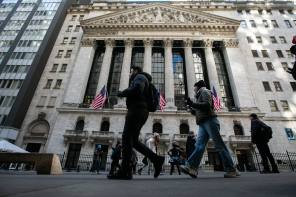

We define natural income as the generation and payout of dividends from income-generating investments.
For example, if a share is paying a dividend of 4.5p per share and your client owns 100,000 shares, they receive an income of £4,500. If a fund owns shares in a number of different companies that pay dividends, all these dividends are aggregated and paid out to shareholders in the fund.
Clearly, for those able to do so, receiving income just from the dividends paid out by an investment can be more favourable than cashing-in units or shares, as it leaves the underlying share pot and capital intact. Since we do not know how long we are going to live, it is important to make capital last as long as possible. In rising markets, capital withdrawn can be replaced by appreciating asset prices, but in a falling market, investors would be selling investments before they had had a chance to recover, permanently eroding the investment pot.
Investors aiming to live off natural income need to consider the risk of loss and volatility of dividend rather than capital. Like share prices (capital), dividends do fluctuate, but, typically, to a significantly lesser extent. During the recent global financial crisis, the peak-to-trough for the FTSE 100 was 48 per cent, but dividends fell by a more palatable 21 per cent. Take Royal Dutch Shell, for instance. Its earnings are largely dependent on the price of oil, which is highly cyclical, but it has not cut its dividend since the Second World War, which it has been able to achieve by not over-gearing its balance sheet and flexing its capital expenditure to protect cash flow when times are difficult. A dividend cut, particularly in the UK, is often a ‘last resort’ measure after all other options such as cutting costs or capital expenditure have been fully explored. As a result, the commitment to maintaining and growing dividends instils capital discipline upon a company’s management.
For many long-term income investors, preserving or even growing the value of their money after they have taken an income is also an objective, as they may want the option to cover specific expenses later in life or look to buy an annuity when rates are more attractive, or want to pass it on to beneficiaries when they die. Unfortunately, very few people are any good at predicting recessions. In a 1966 Newsweek article, the eminent economist Paul Samuelson famously quipped that the stock market had predicted nine of the past five recessions. However, for people expecting to live for 20 years or more after they start investing for income, history has shown there is a good chance their UK equity income investment will be larger at the end of the period as well as their annual income. If an investor had put their capital into the FTSE All-Share Index in 1989 and taken out all the dividend distributions, then 20 years later, even at the trough of the 2009 bear market, the third worst since the formation of the FTSE All-Share Index in 1962, their pot would still be 66 per cent larger than when he first invested.
So on top of providing a good long-term dividend, equity income funds typically aim to grow the value of the investment after dividends are paid out, and there are a number of attractive characteristics of this type of investing that are less commonly known. For instance, over the past 20 years, the IA UK Equity Income sector has outperformed the UK All Companies sector by more than 70 per cent, yet with lower volatility. Income funds tend to invest in companies that are more defensive by nature. By paying a dividend, a company is typically demonstrating that it has a strong enough balance sheet and generates cash; and because the company opts to return cash to shareholders rather than re-invest, its growth rate and subsequent rating tends to be lower. This can be seen when comparing the FTSE 350 Higher Yield Index, which trades on a price-earnings (P/E) multiple of 15x and yield of 5 per cent against the FTSE 350 Lower Yield Index, which trades on a P/E multiple of 23x and a 1.8 per cent yield. One challenge of growth investing can be the blurred lines between structural and cyclical growth, because if the tide turns on cyclical growth, the company faces the double whammy of an earnings downgrade and a de-rating.
From April 2016, the notional 10 per cent tax credit on dividends was abolished and a £5,000 tax-free dividend allowance has been introduced. For a 4.5 per cent yield, that means a couple can have about £22,000 invested without paying tax on the dividends. This allowance is on top of dividends received from Isas, so investors can take advantage of the strong, long-term dividend-paying characteristics of equities in a potentially tax-free investment and without cashing-in shares.
Chris White is head of UK equities of Premier Asset Management
For more news and analysis on UK equity investment, visit
| Key Points |
Receiving income just from the dividends paid out by an investment can be more favourable than cashing-in units or shares. For many long-term income investors, preserving or even growing the value of their money after they have taken an income is also an objective. Equity income funds typically aim to grow the value of the investment after dividends are paid out. |



